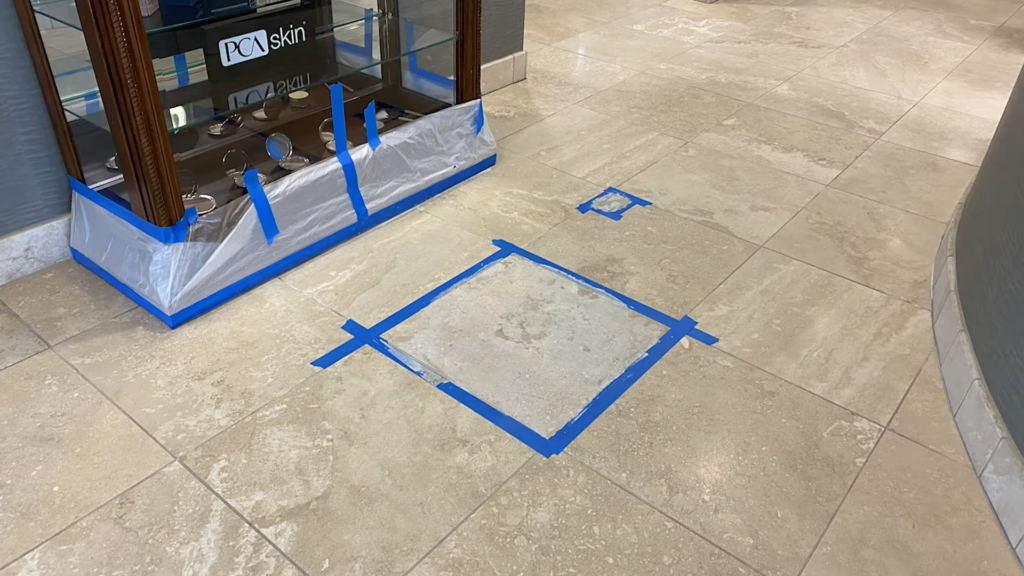Travertine tiles have a timeless appeal and beauty.
Their classic, distinct look makes them a popular choice for the lobby, hallway, and other corporate floorings.
But like any flooring material, travertine has its challenges.
Challenges:
Travertine tiles in their natural state have many holes and voids in them.
When travertine tiles are processed at the factory, the holes and voids are filled. Then the tiles are ground flat and polished.
It’s common for this travertine filler to dislodge from the tiles. The resulting holes and voids need to be re-filled.
In some cases, the holes and voids were never filled in the factory. By filling these holes, you make cleaning and maintaining your floors much easier than before.
Other Common Issues:
- Soil (dirt) can embed into the holes and voids of the floor. Not only does this make your floors look dull and dingy, but it also creates safety concerns.
- Moisture can penetrate tile holes and voids and compromise the integrity of the tile.
Solutions:
Deep scrubbing with the proper equipment and chemicals can remove embedded soil and give you that “like new” look.
Proper restoration of travertine tiles includes:
- Filling holes and voids
- Honing and restoring the polish
- Applying a protective coating
The protective coating prevents moisture and soils from getting into the tile. It also keeps the filling material from coming loose and prevents new holes and voids from forming.
Have questions about your Travertine Tile Floors? Click here to contact us. We’re happy to help.




